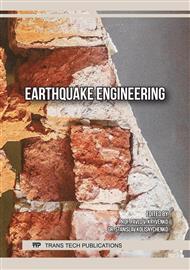p.294
p.302
p.309
p.314
p.322
p.331
p.341
p.346
p.351
Impact Response of Reinforced Concrete Columns with Different Axial Load under Low-Velocity Impact Loading
Abstract:
Building collapses from the seismic pounding of two adjacent buildings have been found in many past earthquakes. For the two buildings with different story height, the pounding induces impact load and local stress at column mid-height where the provided column reinforcement is normally lesser than the column’s edge. This paper aims to investigate the impact responses of reinforced concrete columns with different axial load and shear capacity by using numerical simulation method. Sixteen reinforced concretes columns were subjected to an impact load created by dropping 300 kg hammer at the height of 1,200 mm above the mid-span of the column. Every specimen has an identical cross section of 220 mm by 220 mm, with 3,000 mm of clear span length. Both ends of the column were fully restrained. The magnitude of the axial load varies from 0% to 40% of the ultimate axial capacity of the concrete section. Shear reinforcement spacing varies from @200 mm to @60 mm. It is found that the axial loads have a great effect on the impact responses of the RC columns. The specimens with high axial load yield higher peak impact force value and less mid-span deflection. Shear cracks were observed on the specimens with low axial force, but the cracks were relatively decreased when increasing the axial load.
Info:
Periodical:
Pages:
322-330
Citation:
Online since:
May 2019
Authors:
Price:
Сopyright:
© 2019 Trans Tech Publications Ltd. All Rights Reserved
Share:
Citation:



